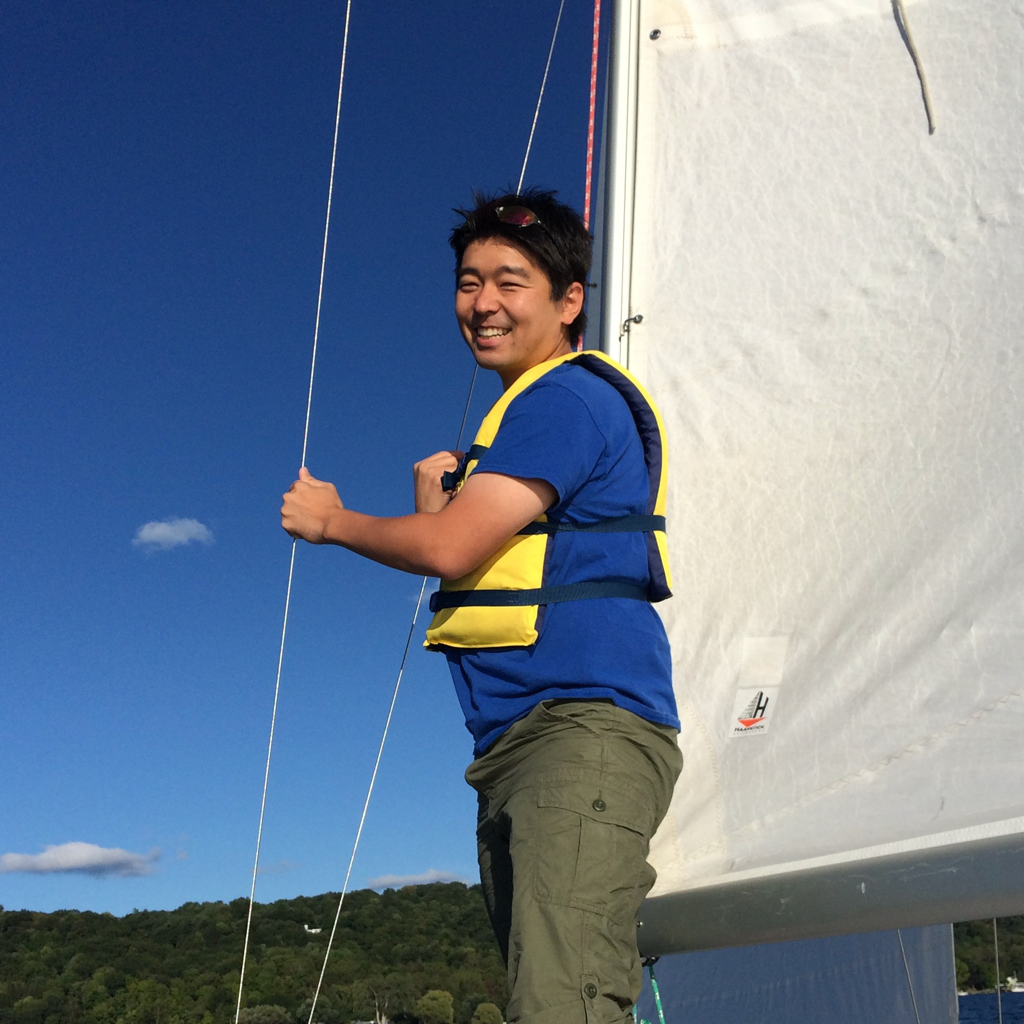Yoshitomo Okawachi
Columbia University, USAFor pioneering contributions to slow light based on stimulated scattering and chip-based optical frequency combs.

Surprisingly, it was pop culture that lead to Yoshitomo (Yoshi) Okawachi’s interest in science. The first movie he saw in theaters was “Back to the Future II,” and he reports that Doc Emmett L. Brown, the “crazy” scientist from the movie, is still his ideal inventor. He also recalls the hype surrounding NASA’s launch of the space shuttle Columbia in 1989, which he was able to watch. At that time, he wanted to be an astronaut and pretended a family minivan was a spaceship.
More conventionally, Yoshi was always influenced by the many passionate teachers he had in school. His favorite subjects were strongly linked to his favorite teachers. In fact, during his 8th grade year, which he spent in Japan, his enthusiastic Japanese history teacher nearly had Yoshi convinced to pursue history. As he grew up, though, he became more interested in math and followed that interest into college at Cornell University, USA. When he first started at Cornell, he selected a major called “Science and Technology Studies.” Not knowing the exact nature of that field, he quickly learned that it dealt more with philosophy than math and was soon looking for a change. His friends were in the engineering department, and he remembers one friend insisting that Applied & Engineering Physics was one of the most challenging majors. Always seeking a challenge, Yoshi switched to that field. His new undergraduate advisor introduced Yoshi to Alexander Gaeta, and as he says, “The rest is history.”
Mentorship has played an essential role throughout Yoshi’s career. He shares that in addition to more traditional mentors like Alex Gaeta, he has gained insight from other group members and even other students and professors that work nearby or across the hall. During his freshman year, a student at Cornell told him, “Yoshi, don’t ever expect anything to work,” which was actually a lesson in staying level-headed and calm. He recalls another grad student, James Van Howe, who emphasized the importance of taking a break to refresh the mind. Later, Jay Sharping, who was a postdoc in the Gaeta group, brought new and valuable technological knowledge and a human side to the work. After particularly grueling doctoral qualifying exams and some bad research news, Jay reached out to Yoshi personally. Yoshi reflects, “I think those kinds of interactions had a big influence on me in terms of how I wanted to be for the younger generation.”
Today, Yoshi researches nonlinear photonics and focuses on using parametric four-wave mixing, integrated microresonators, and waveguide structures. The lab applies this to do optical frequency comb generation, quantum random number generation, squeezed state generation, and more. One of their main challenges is staying on the cutting edge of research that has a real impact on the field. As he looks to the broader field of optics and photonics, he says it is exciting to see how far technology has progressed in the last 15 years. He anticipates that as applications expand and the research becomes more interdisciplinary, the future of the field is bright so long as his lab and others can continue pushing the field forward.
As his professional home, Optica has been highly beneficial for Yoshi throughout his career. As a student, the Student Chapter Program was incredibly formative, and he took full advantage of the networking, professional development, and leadership opportunities offered through the program. In 2017, he was selected as an OSA Ambassador, which was an exceptional experience. He says, “There aren’t that many opportunities where you can really give back to the community on a day-to-day basis…and being able to interact with Student Chapters or early career professionals on a global scale and share my experiences was big.” For Yoshi, being a part of Optica is all about being an active member of the community, and he treasures the connections he has to scientists all over the globe.
Photo Credit: Yoshi Okawachi
